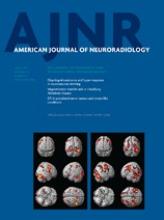Abstract
SUMMARY: HE is a neuropsychiatric syndrome that develops in patients with severe liver diseases, with portosystemic shunt surgery in the form of diffuse mild brain edema. It is also associated with functional changes, such as those in attention and the DMN. MR imaging offers a range of capabilities for assessing the low-grade brain edema and its functional changes in brain affected by HE; therefore, it provides the opportunity to uncover the pathophysiologic mechanisms of HE. This article will review our current understanding of the pathophysiology of low-grade brain edema and will outline the role of structural MR imaging, MTR, DWI, DTI, and MR spectroscopy in the detection of low-grade brain edema, and the role of BOLD fMRI in the exploration of the related functional changes. A perspective of the study in this area will also be provided.
ABBREVIATIONS:
- ALFF
- amplitude of low-frequency fluctuation
- BOLD
- blood oxygen level−dependent
- DMN
- default mode network
- FA
- fractional anisotropy
- FDR
- false discovery rate
- Glx
- glutamine/glutamate
- 1H-MR
- proton MR
- IPL
- inferior parietal cortex
- MHE
- minimal hepatic encephalopathy
- mIns
- myo-inositol
- MTI
- magnetic transfer imaging
- MTR
- magnetic transfer ratio
- NAA
- N-acetylaspartate
- NCT
- number connection test
- PCC
- posterior cingulate cortex
- © 2013 by American Journal of Neuroradiology
Indicates open access to non-subscribers at www.ajnr.org












